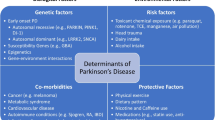Abstract
Genetic effects on the liability scale are informative for describing the genetic architecture of binary traits, typically diseases. However, most genetic association analyses on binary traits are performed by logistic regression, and there is no straightforward method that transforms both effect size estimate and standard error from the logit scale to the liability scale. Here, we derive a simple linear transformation of the log odds ratio and its standard error for a single nucleotide polymorphism (SNP) to an effect size and standard error on the liability scale. We show by analytic calculations and simulations that this approximation is accurate when the disease is common and the SNP effect is small. We also apply this method to estimate the contribution of a SNP near the RET gene to the variance of Hirschsprung disease liability, and the age-specific contributions of APOE4 on the variance of Alzheimer’s disease liability. We discuss the approximate linear inter-relationships between genotype and effect sizes on the observed binary, logit, and liability scales, and the potential applications of the linear approximation to statistical power calculation for binary traits.



Similar content being viewed by others
Code availability
The R code to implement the four transformation method is provided on the author’s Github page https://github.com/tianwu1117/EStrans.
References
Daetwyler HD, Villanueva B, Woolliams JA (2008) Accuracy of predicting the genetic risk of disease using a genome-wide approach. PLoS ONE 3(10):e3395. https://doi.org/10.1371/journal.pone.0003395
Dempster ER, Lerner IM (1950) Heritability of threshold characters. Genetics 35(2):212–236. Retrieved from https://www.ncbi.nlm.nih.gov/pubmed/17247344
Falconer DS (1965) The inheritance of liability to certain diseases estimated from the incidence among relatives. Ann Hum Genet 29:51–76
Farrer LA, Cupples LA, Haines JL, Hyman B, Kukull WA, Mayeux R et al (1997) Effects of age, sex, and ethnicity on the association between apolipoprotein E genotype and Alzheimer disease: a meta-analysis. JAMA 278(16):1349–1356. https://doi.org/10.1001/jama.1997.03550160069041
Gillett AC, Vassos E, Lewis CM (2018) Transforming summary statistics from logistic regression to the liability scale: application to genetic and environmental risk scores. Hum Hered 83(4):210–224. https://doi.org/10.1159/000495697
Lee SH, Wray NR, Goddard ME, Visscher PM (2011) Estimating missing heritability for disease from genome-wide association studies. Am J Hum Genet 88(3):294–305. https://doi.org/10.1016/j.ajhg.2011.02.002
Lee SH, Goddard ME, Wray NR, Visscher PM (2012) A better coefficient of determination for genetic profile analysis. Genet Epidemiol 36(3):214–224. https://doi.org/10.1002/gepi.21614
Lloyd-Jones LR, Robinson MR, Yang J, Visscher PM (2018) Transformation of summary statistics from linear mixed model association on all-or-none traits to odds ratio. Genetics 208(4):1397–1408. https://doi.org/10.1534/genetics.117.300360
Loh PR, Tucker G, Bulik-Sullivan BK, Vilhjalmsson BJ, Finucane HK, Salem RM et al (2015) Efficient Bayesian mixed-model analysis increases association power in large cohorts. Nat Genet 47(3):284–290. https://doi.org/10.1038/ng.3190
Pawitan Y, Seng KC, Magnusson PKE (2009) How many genetic variants remain to be discovered? PLoS ONE. https://doi.org/10.1371/journal.pone.0007969
Reiman EM, Arboleda-Velasquez JF, Quiroz YT, Huentelman MJ, Beach TG, Caselli RJ et al (2020) Exceptionally low likelihood of Alzheimer’s dementia in APOE2 homozygotes from a 5,000-person neuropathological study. Nat Commun 11(1):667. https://doi.org/10.1038/s41467-019-14279-8
Seblova D, Quiroga ML, Fors S, Johnell K, Lovden M, de Leon AP et al (2018) Thirty-year trends in dementia: a nationwide population study of Swedish inpatient records. Clin Epidemiol 10:1679–1693. https://doi.org/10.2147/CLEP.S178955
So HC, Gui AH, Cherny SS, Sham PC (2011) Evaluating the heritability explained by known susceptibility variants: a survey of ten complex diseases. Genet Epidemiol 35(5):310–317. https://doi.org/10.1002/gepi.20579
Tang CS, Gui H, Kapoor A, Kim JH, Luzon-Toro B, Pelet A et al (2016) Trans-ethnic meta-analysis of genome-wide association studies for Hirschsprung disease. Hum Mol Genet 25(23):5265–5275. https://doi.org/10.1093/hmg/ddw333
Tomuschat C, Puri P (2015) RET gene is a major risk factor for Hirschsprung’s disease: a meta-analysis. Pediatr Surg Int 31(8):701–710. https://doi.org/10.1007/s00383-015-3731-y
Vinkhuyzen AAE, Wray NR, Yang J, Goddard ME, Visscher PM (2013) Estimation and partition of heritability in human populations using whole-genome analysis methods. Annu Rev Genet 47:75–95. https://doi.org/10.1146/annurev-genet-111212-133258
Visscher PM, Wray NR, Zhang Q, Sklar P, McCarthy MI, Brown MA, Yang J (2017) 10 years of GWAS discovery: biology, function, and translation. Am J Hum Genet 101(1):5–22. https://doi.org/10.1016/j.ajhg.2017.06.005
Wu TT, Tsai TW, Chang H, Su CC, Li SY, Lai HS, Li C (2010) Polymorphisms of the RET gene in hirschsprung disease, anorectal malformation and intestinal pseudo-obstruction in Taiwan. J Formos Med Assoc 109(1):32–38. https://doi.org/10.1016/s0929-6646(10)60019-8
Yang J, Wray NR, Visscher PM (2010) Comparing apples and oranges: equating the power of case-control and quantitative trait association studies. Genet Epidemiol 34(3):254–257. https://doi.org/10.1002/gepi.20456
Acknowledgements
We thank Dr. Zipeng Liu for useful discussions and suggestions.
Funding
This study was funded by Research Grants Council, University Grants Committee (HK) (Grant Numbers 17128515, 17124017).
Author information
Authors and Affiliations
Corresponding author
Ethics declarations
Conflict of interest
The authors declare that they have no conflict of interest.
Ethical approval
This article does not contain any studies with human participants or animals performed by any of the authors.
Additional information
Publisher's Note
Springer Nature remains neutral with regard to jurisdictional claims in published maps and institutional affiliations.
Edited by Sarah Medland.
Appendix
Appendix
Derivation of the variance of the estimated lnOR for standardized genotype under case–control design
The number of cases and controls in different allele and disease affection status.
Allele status\Affection status | Case | Control |
|---|---|---|
With effect allele | a | c |
Without effect allele | b | d |
We denote the total sample size by \(n\). Accordingly, the total number of alleles is \(2n\). The total number of cases and controls are denoted by \(2{n}_{A}\) and \(2{n}_{U}\), respectively. \(f\) is the frequency of the effect allele.
For case–control design, \({n}_{A}=nw\), where \(w\) is the case–control ratio.
When the genotype is standardized, \(2f(1-f)=1\).
Rights and permissions
About this article
Cite this article
Wu, T., Sham, P.C. On the Transformation of Genetic Effect Size from Logit to Liability Scale. Behav Genet 51, 215–222 (2021). https://doi.org/10.1007/s10519-021-10042-2
Received:
Accepted:
Published:
Issue Date:
DOI: https://doi.org/10.1007/s10519-021-10042-2




